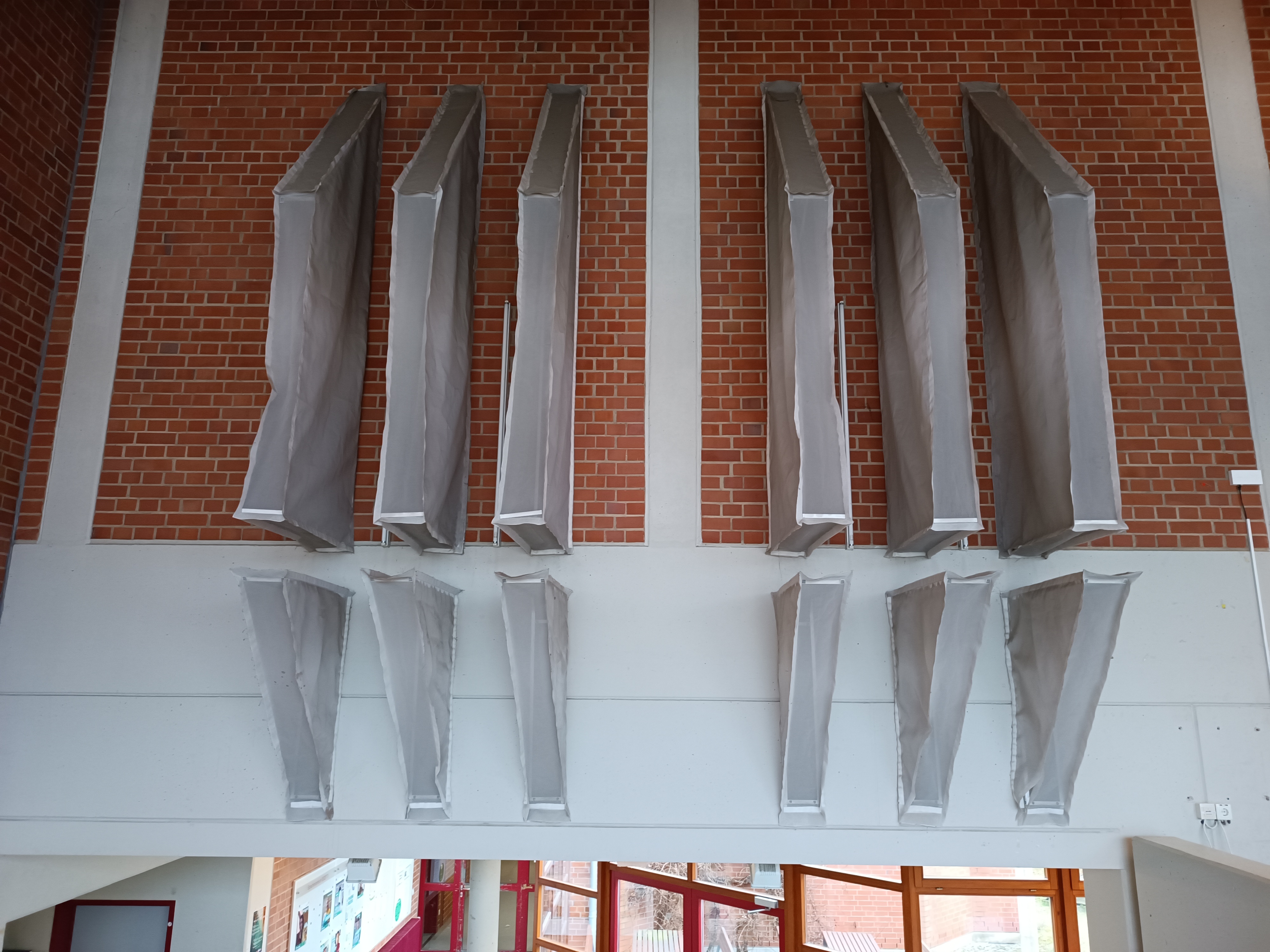Gebäude Geisteswissenschaften II

The artwork “Innen - Außen” by Gisela Hoffmann, which is located at the University of Bayreuth, is a remarkable example of the integration of textile art into architectural space. This installation consists of polyester yarn trapezoids and triangles that are tensioned with nylon threads and illuminated. The work is characterized by its moire effect*, which is created by the overlapping of patterns and produces different visual effects depending on the viewing angle and lighting conditions.
At first glance, the artwork looks like a component of the building technology. For example, metal ventilation shafts. Only on closer inspection does the true nature of this installation reveal itself to the viewer.
"Innen - Außen" is an impressive example of the fusion of art and architecture. The installation invites the viewer to rediscover the space and engage with the visual and conceptual layers of the artwork. Gisela Hoffmann's work demonstrates how geometric shapes and light effects can be used to promote a deeper perception and reflection on the relationship between inside and outside.
Gisela Hoffmann's work is characterized by her training at the Academy of Fine Arts in Nuremberg and her long-standing engagement with Concrete Art. Her art-in-architecture projects, such as the "Quarter Column" in the Bavarian State Chancellery in Munich and the installation "Osmosis" in the Museum of Concrete Art in Ingolstadt, show her ability to create artworks that are in dialogue with architecture and redefine space.
The title "Innen - Außen (Inside - Outside)" hints at the duality and relationship between the inner and outer. The installation could be interpreted as a metaphor for the connection between the individual and the world, between the spiritual and the material. The translucent forms and the moiré effect could also be seen as a symbol of the complexity and multifaceted nature of human thought and perception.

The moiré effect*, created by the superimposition of geometric shapes, produces an optical illusion that changes depending on the perspective and lighting. This effect invites the viewer to explore the artwork from different angles and engage with the changes in visual perception.
The use of polyester yarn and nylon threads emphasizes the lightness and transparency of the installation. The material allows light to pass through the structures, enhancing the moiré effect and creating a dynamic, almost immaterial quality.
The installation is specifically designed for the entrance area of the Humanities II building. It interacts with the architecture and creates a connection between the interior and the outside world. The vertical arrangement of trapezoids and triangles directs the viewer's gaze upward, visually expanding the space.
*The moiré effect is an optical phenomenon that occurs when two or more patterns with regular structures, such as lines, dots, or grids, are superimposed. This superimposition results in a new, often wavy pattern known as a moiré pattern. The effect arises from the interference of the overlapping patterns and can vary depending on the angle and distance of the superimposed structures.
